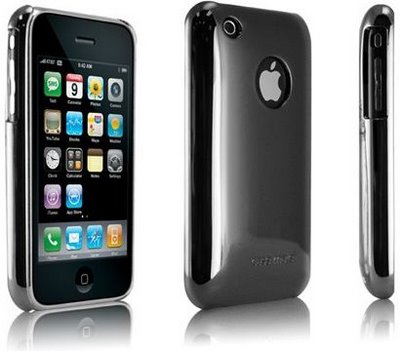 By Tiernan Ray
By Tiernan Ray
Susquehanna Financial Group analyst Chris Caso this afternoon started coverage of Qualcomm (QCOM) with a “Positive” rating and a $70 price target, writing that there’s a “long term bull case” to be made that 4 billion or more people in emerging markets who are using 2G handsets will move to 3G handsets over time, leading to more royalty payments for Qualcomm for all the intellectual property it will sell into all those handsets.
How do you put that all in financial numbers? Caso suggests looking at how Qualcomm is slashing prices to gain “incremental” sales into cheap 3G phones for the developing world, which will produce incremental royalty:
Our checks in Asia last week indicate that QCOM is pressuring prices even on low price competitors such as Mediatek, offering the MSM 7227 chipset at pricing as low as $8-$10. […] If we assume QCOM is selling the 7227 for $9 into a $200 phone (wholesale cost), that would provide a $7 incremental royalty (at a 95% gross margin), since the emerging market purchaser of that phone is likely upgrading from a 2G phone, for which QCOM does not enjoy a royalty. Assuming about a 50% gross margin on the chipset, the total transaction would yield $16 in QCOM revenue and $11.15 gross profit.
And apart from licensing and royalty, Qualcomm’s own chip business is not too bad, he thinks:
We think the near- term opportunities at NOK and on the iPhone are very positive, although well known. while we think these opportunities still represent potential upside, these are consensus expectations. We think less well expected are gains at other OEMs (particularly at HTC, which uses QCOM exclusively, and has established a leadership smart phone position), as well as opportunities at Chinese OEMs. We think the incumbent Chinese 2.5G silicon vendors are in an inferior position to support that market’s transition to 3G (and in no position to support LTE), and we consider this a new opportunity for QCOM.
And lastly, Caso thinks Qualcomm’s chip sales will do just fine regardless of whether Nokia (NOK) or Research in Motion (RIMM) have a resurgence, or flame out. Qualcomm is in a good position to be the main supplier to Nokia for its forthcoming phones based on Microsoft’s (MSFT) Windows, and also to RIM for that company’s phones based on BlackBerry OS 7, coming this year, and phones based on the “QNX” operating system, expected next year.
But either way, if one of those two loses market share, probably they lose share to another handset maker who’s a customer of Qualcomm, Caso concludes.
Qualcomm shares today fell 2 cents to $55.43.